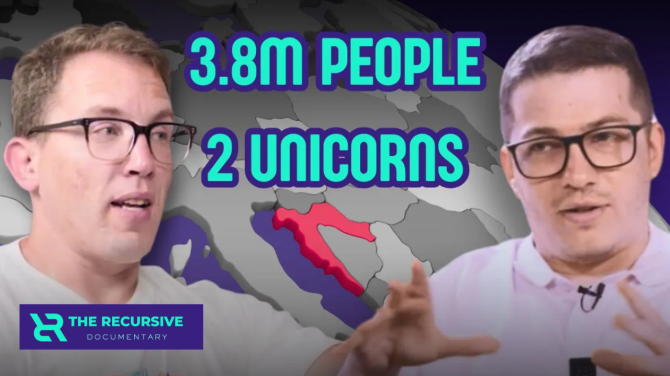The logistics world likes to talk about the future: electric trucks and carbon-neutral supply chains. Big players are making progress. Daimler Truck is heading towards CO2-neutral drive systems by relying on e-trucks in its own supply chain. Mercedes-Benz Trucks also has ambitious plans to fully electrify its own freight. However, for the 79% of fleet owners with 10 vehicles or fewer, we are not there yet.
Many of the technologies we’re excited about — especially e-trucks — won’t deliver their full value unless the way we operate changes first. An e-truck isn’t just a cleaner version of a diesel one; it demands a different operating model entirely. Even if we resolve the infrastructure gaps and power grid demands, the bigger challenge is preparing logistics planners to use these vehicles effectively.
Route planning must now account for range limits and charging time, and factor in how e-trucks respond differently to load weight, weather, and terrain. That requires connected systems, real-time data, and new planning habits. Without those, e-trucks may show up in fleets, but sit idle or underperform. So what needs to happen to get the industry operationally ready to make them work?
Most small fleets still co-ordinate with phone calls, printed papers and WhatsApp messages
Many trucking companies in Europe, particularly in Central and Eastern Europe, are dispatching loads by phone. Some dispatchers have ten tabs open, plus WhatsApp, as well as printed documents, copying data manually between systems that don’t speak to each other. What we’re left with is often duplicated and outdated information and opaque audit trails, tampering with our ability to resolve issues.
Most trucking companies are small, family-run fleets with five or ten trucks. These companies don’t have IT departments, and spreadsheets remain the dominant tool for planning routes, tracking fuel use, and assigning drivers. They have one person doing the work of four, and little time to investigate digital tools that might help.
So when people from outside the industry talk about real-time emissions tracking or predictive fleet maintenance powered by AI, I think: we haven’t even nailed basic visibility yet — having a digital view of where your trucks are, where your loads are going, and whether anything is going wrong, without hoping and making phone calls to confirm. How can you optimize what you can’t even see?
Small discrepancies, repeated across fleets, cost companies thousands. For example, industry figures estimate fuel shrinkage to be between 5 and 10% of a fleet’s annual consumption. But when systems aren’t connected, and the data is messy, managers struggle to have a clear picture of what is happening.
This kind of “dirty data” undermines every decision, from choosing the right routes to understanding profit per customer. And if you’re making business decisions on flawed information, you’re likely throwing money away.
Nothing will change if we don’t talk to the people doing the work
Digitalization is about connecting data and creating more streamlined operations, but it is also a shift in mindset. People tend to resist what they don’t know or understand, especially when mistakes are expensive.
In logistics, the cost of operational failure is immediate and visible; you miss a delivery, your client is unhappy, and you potentially damage future business opportunities. McKinsey reported in 2024 that resistance to change is a close second after data quality and availability when it comes to ineffectively deploying connected systems.
Training takes time. New workflows feel like a risk. A dispatcher who’s worked the same routes for ten years often trusts their own head more than any software. And they’re not always wrong. If you’ve ever seen a GPS suggest a 16-ton truck take a shortcut through a village, you’ll understand why.
Technology must meet logistics teams where they are and fit into their existing workflows. Above all, getting the product fit right means listening to the drivers and dispatchers on the other end of the phones and behind the screens. They know exactly where existing systems fail and where friction costs time and money. But they’re also the ones who will revert to old methods if new tools don’t help them immediately.
By bringing drivers, dispatchers, and fleet managers into the design loop early, rather than just training them after the system is built, adoption happens more naturally. That’s when digital transformation stops being a project and starts being a real shift in how work gets done.
What needs to happen first
One of the most overlooked challenges in digitizing trucking operations is aligning stakeholder priorities. Fleet owners will be keen to adopt tools that improve cost efficiency or that can help maximize asset utilization. However, dispatchers and drivers have more immediate goals, such as getting the load out without any delays and keeping customers informed. Before we talk about e-trucks and net-zero roadmaps, we need to address four foundational issues:
-
- Visibility. Everyone — from the dispatcher to the shipper — needs to see the same truth. Where are the trucks? What are they carrying? When will they arrive? Without shared visibility, logistics teams can function, but they cannot plan accurately ahead of time in the same way they could with analytics. The biggest bottlenecks continue unnoticed, leaving drivers and dispatchers struggling with daily reactive work.
- Interoperability. Systems need to connect. If live telematics data feeds delivery schedules, you can plan reliable driver and asset assignments. Or if fuel use is linked to trip distance, it’s much easier to identify costly operations from profitable ones and make educated strategic process changes.
- Simplicity. Digital tools have to reduce work, not add to it. A fleet manager doesn’t want 15 dashboards; they want one screen that tells them what matters today. Tools should fit into the existing workflow. Project leaders and technology providers must sit with the frontline workers to understand the user journey and cultural behaviors.
- Support. We can’t expect small companies to “go digital” on their own. They need onboarding, training, and guidance. Otherwise, the tools sit unused, and nothing changes. Live demos and platform walkthroughs targeted at dispatchers, planners, and operations managers, individually, will help ensure proper onboarding. These sessions should cover account setup, initial data imports, and how to integrate with existing tools for a connected experience. Many technology providers will offer ongoing coaching for the initial months of launch, as well as 24/7 troubleshooting in case of any technical issues.
Surprisingly, trucking is one of the most measurable industries because most of today’s vehicles have sensors that generate data for planners to tap into and monitor. Yet it’s also one of the least digitized, outside of the top tier of large fleets.
For a green and efficient supply chain, we need to start by helping the small players get the basics right. I’m not saying innovation should wait. But it should start where the pain is. And right now, the pain isn’t the lack of EV vehicles. It’s the daily grind of trying to manage logistics in the dark.








